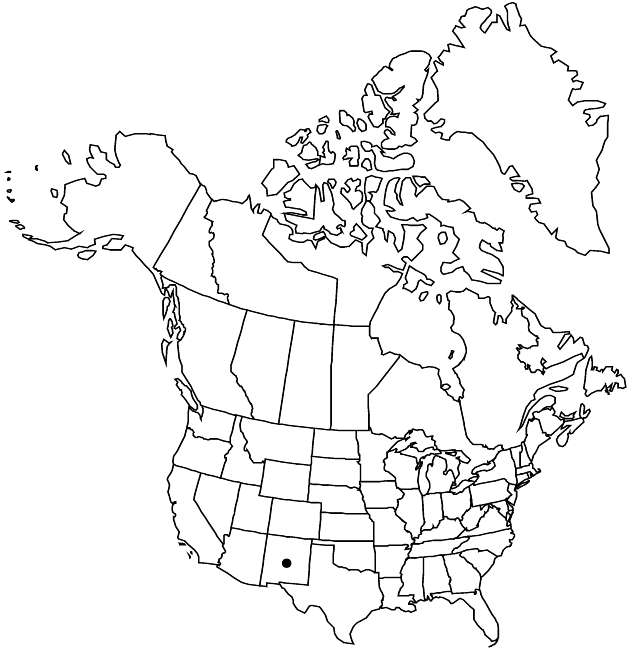Ionactis elegans
Phytologia 73: 420. 1992.
Plants 3–5 (–9) cm (with relatively short caudex branches, cespitose; taprooted). Stems proximally herbaceous or slightly woody, eglandular. Leaves: proximal densely clustered, internodes not visible, reduced in size distally; mid and distal 5–17 mm, margins green, faces glabrous or sparsely puberulent, eglandular. Heads 1 (–3). Involucres 4.5–6.5 mm. Disc-florets bisexual, fertile; corollas 3.8–5 mm. Cypselae 2–2.5 mm, faces sessile to stipitate-glandular. 2n = 18.
Phenology: Flowering Jun–Aug.
Habitat: Granite outcrops
Elevation: 2500 m
Discussion
Of conservation concern.
Ionactis elegans is known from a single population system in Eagle Creek Canyon, Lincoln County.
Selected References
None.
Lower Taxa
"[" is not declared as a valid unit of measurement for this property."]" is not declared as a valid unit of measurement for this property.
